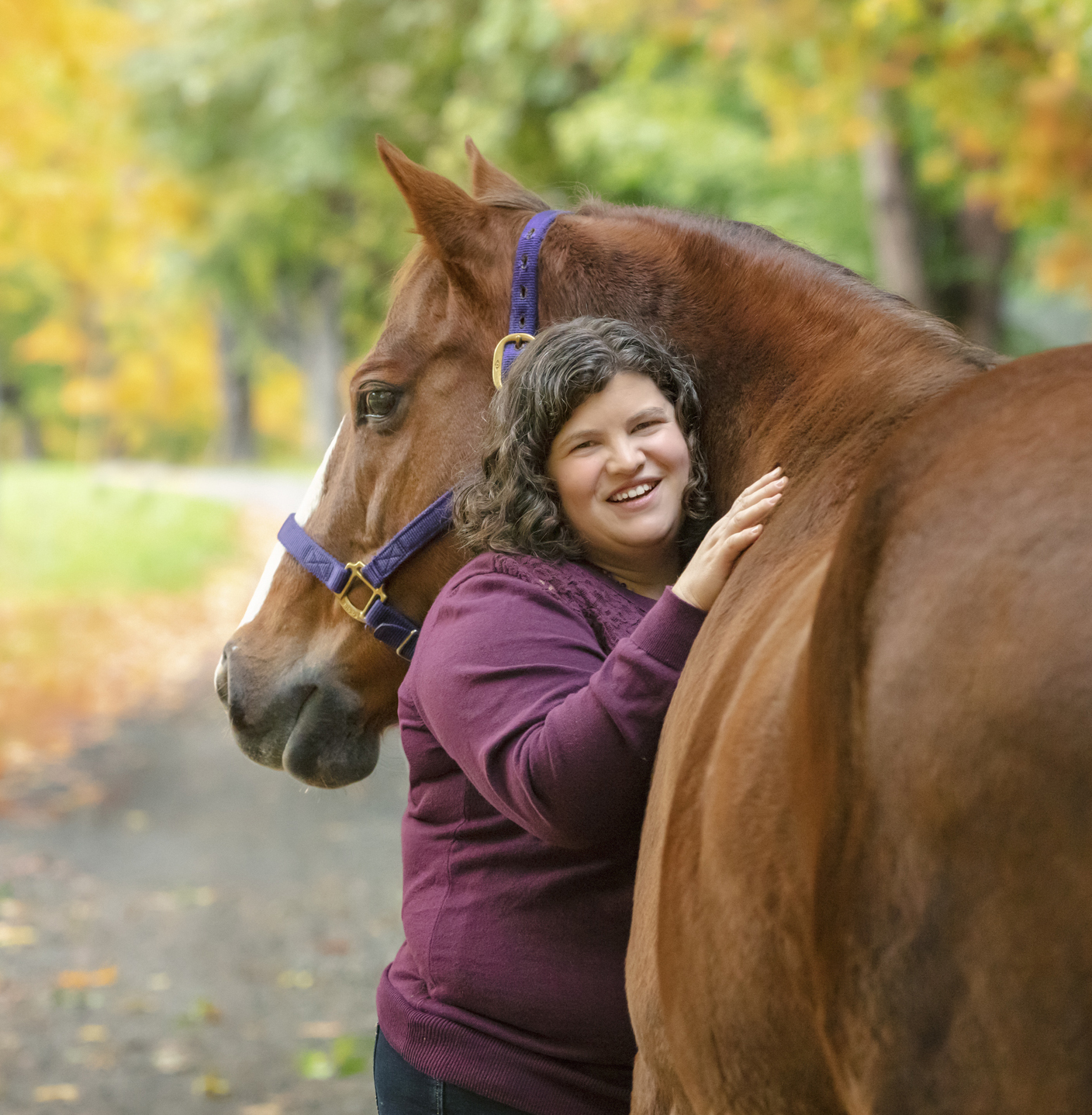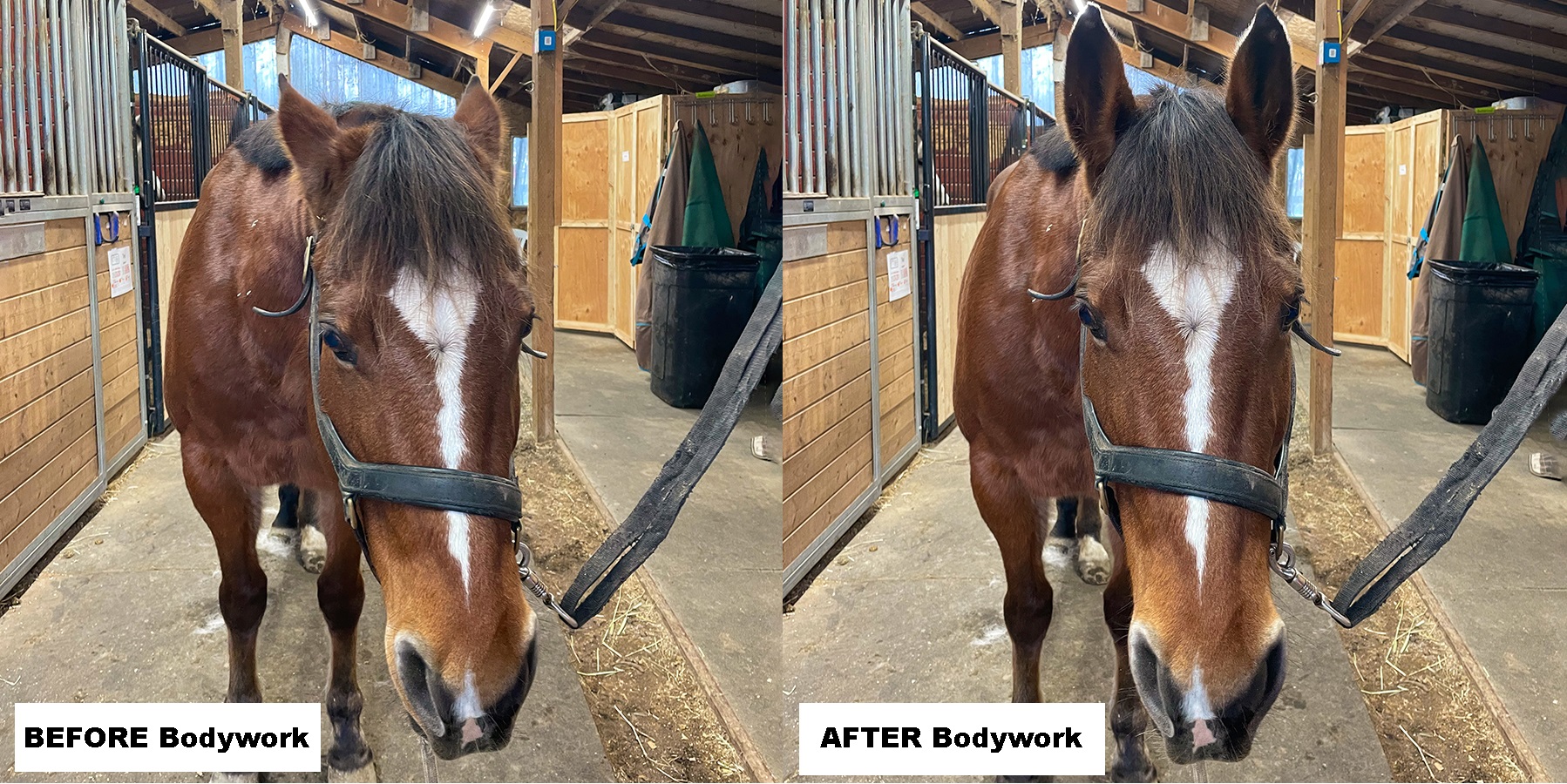Your Horse’s Behavior Can be an Expression of Pain
As you get up from your desk, you place a hand on your shoulder and rotate it uncomfortably. Really need to get that checked out, you think. As you fight traffic on the drive to the barn, you notice the tension in your back.
When you arrive, you pull your horse out—he’s always a little slow when leading—and you start tacking him up. You thought it was too cold for flies, but he was swishing his tail when you brushed him. He’s always troublesome to saddle but you manage. He’s antsy when you mount up, and will sometimes kick out under saddle, but it’s nothing you can’t handle.
You get your ride in, give him a treat and a kiss at the end, and head home. You feel better going home than you did on your way to the barn, and that makes you pause—does my horse feel sore, too?
In the scenario above, there were several signs indicating discomfort. Did you catch them?
1. Bucking and/or Kicking Out
If your horse is bucking or kicking out under saddle that may be a sign they feel uncomfortable. We’re told to just “work them through it,” but your horse is trying to tell you something in the only way they can. This is especially true if it’s a newer behavior, or if it happens at specific moments, such as asking for a gait transition. A horse who is comfortable in their body should rarely kick or buck.
2. Reluctance to Move
If your horse is consistently a few steps behind you when you’re leading them, or you find yourself having to kick them to move forward under saddle, they are probably feeling some discomfort somewhere. When you have a bad stomachache, the last thing you want to do is go for a long jog with a big backpack on. The same goes for your horse. When your horse feels good in their body, there will be willingness and ease of movement.
3. Doesn’t Stand Still for Mounting
If you’re standing on the mounting block while your horse dances around or moves in circles around you, that’s a sign your horse is feeling some discomfort. This is another moment that is often misunderstood to be a training issue rather than one of pain or discomfort. A horse who doesn’t anticipate pain will stand still and balanced as their rider mounts up.
4. Issues when Saddling and/or Grooming
Just like when mounting, if your horse has trouble standing still when grooming and saddling, that’s a sign they are feeling discomfort somewhere. A comfortable horse should enjoy a good groom session and should be able to stand still when saddling.
5. Swishing Tail, Pinned Ears, Nipping
A horse in discomfort will often wring or swish their tail. There will be other signs of discomfort as well, such as tension through the face, pinned ears, and/or nipping. They may toss their head or stomp a front foot. Rather than a training issue, think of these signs as your horse trying to communicate in the only way they can. A horse who is comfortable will have a light, balanced tail—even when swishing at flies—and will be relaxed through their face and shoulder.
How to Help Your Horse
So, your horse is showing some of these signs and you’re concerned there is pain or discomfort, but what do you do about it? The first step is to contact your veterinarian. They can perform an exam and prescribe treatment where needed.
Once your vet is involved, an equine bodyworker can help your horse find reconnection and ease of movement in areas of discomfort. A professional bodyworker should have hands-on training from a reputable school, be able to speak comfortably about equine anatomy and biomechanics, and be able to provide you with exercises to help your horse between sessions. They may also require a vet referral or licensing by the state, depending on local laws.
In addition to finding a bodyworker for your horse, don’t forget to visit a bodyworker yourself—your horse will thank you!
Now when you get up from your desk and feel an ease of movement you’ll think, so glad I went to a bodyworker! When you arrive at the barn, your horse greets you with ears forward and joyful movement. Grooming and tacking up is a breeze, and you’re mounting up and moving out before you know it. Thanks to addressing your horse’s discomfort, working with your horse is so much more joyful and full of ease.
See this article in the May/June 2023 online edition:
May/June 2023

Amanda Leto, owner of Horse by Northwest LLC, provides equine bodywork and massage services to compassionate horse owners who want happier, healthier horses. Her clients see a difference in their horse’s gait, poise, and freedom of movement within even a few sessions. Horse owners frequently consider Amanda an essential part of their herd’s well-being. For more information, please visit www.horsebynorthwest.com.






